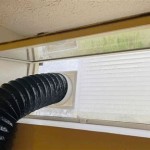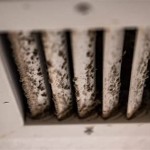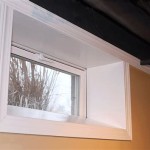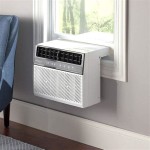How To Fix Cinder Block Basement Walls
Cinder block basement walls, while providing structural support, are susceptible to various issues stemming from moisture, age, and soil pressure. Addressing these issues promptly and correctly is crucial for maintaining the integrity of the foundation and preventing more significant problems from developing. This article provides a comprehensive guide on how to diagnose and repair common problems found in cinder block basement walls.
Before commencing any repair work, a thorough inspection of the basement walls is essential. This inspection should identify the types of problems present, their severity, and underlying causes. Look for cracks, bowing, efflorescence, and water seepage. Document these findings with photographs and detailed notes. Consider consulting with a qualified structural engineer or contractor if significant structural damage is suspected. In many municipalities, significant repairs may require permits and adherence to specific building codes.
Addressing Cracks in Cinder Block Walls
Cracks are one of the most common problems encountered in cinder block basement walls. They can range from hairline cracks to significant fractures that compromise structural stability. Understanding the type of crack present is critical in determining the appropriate repair strategy.
Hairline cracks, typically less than 1/8 inch wide, are generally non-structural and often caused by shrinkage of the concrete or minor settling. These cracks can be addressed with epoxy or polyurethane injections. Before injecting the sealant, clean the crack thoroughly with a wire brush and remove any loose debris. Use a vacuum cleaner to remove any remaining dust. The injection process involves injecting the epoxy or polyurethane with a caulking gun, starting at the lowest point of the crack and working upwards. Ensure the sealant completely fills the crack. Once the sealant has cured, scrape away any excess material with a razor blade or utility knife.
Larger cracks, exceeding 1/8 inch or demonstrating displacement, are more indicative of structural problems and require a more robust repair. These cracks may be caused by hydrostatic pressure from the surrounding soil, settlement, or other foundation issues. A common method for repairing these cracks is to use hydraulic cement. Hydraulic cement expands as it cures, forming a watertight seal. Before applying the hydraulic cement, widen the crack with a cold chisel and hammer to create an inverted "V" shape. This shape allows the cement to lock into the surrounding concrete. Clean the crack thoroughly and dampen it with water. Mix the hydraulic cement according to the manufacturer's instructions and apply it to the crack with a trowel. Pack the cement firmly into the crack and smooth the surface. Keep the repaired area damp for several days to ensure proper curing.
For severe cracking or cracks showing significant displacement, professional evaluation and repair are strongly recommended. These situations may require structural reinforcement, such as installing carbon fiber straps or steel beams. These methods are designed to distribute the load and prevent further cracking. A structural engineer can assess the extent of the damage and recommend the most appropriate repair strategy.
Controlling Moisture and Efflorescence
Moisture is a constant threat to basement walls. It can lead to efflorescence, mold growth, and, over time, the deterioration of the cinder blocks. Identifying and addressing the sources of moisture is crucial for preventing these problems.
Efflorescence is a white, powdery deposit that forms on the surface of cinder block walls. It is caused by water dissolving soluble salts from the concrete and then evaporating, leaving the salts behind. While efflorescence itself is not structurally damaging, it is a clear indicator of moisture intrusion. To remove efflorescence, use a stiff brush and a mild detergent solution. Rinse the wall thoroughly with clean water. Avoid using acidic cleaners, as they can damage the concrete.
Preventing moisture intrusion is essential for controlling efflorescence and preventing other moisture-related problems. Common sources of moisture include poor surface drainage, leaking gutters, and high water tables. Ensure that the ground slopes away from the foundation to direct water away from the walls. Clean gutters regularly to prevent overflows. Consider installing a French drain around the perimeter of the foundation to collect and divert groundwater. Interior waterproofing systems, such as sump pumps and interior drainage systems, can also help to control moisture levels in the basement.
Applying a waterproof sealant to the interior of the cinder block walls can also help to prevent moisture intrusion. There are various types of waterproof sealants available, including cement-based sealants, acrylic sealants, and epoxy sealants. Choose a sealant that is specifically designed for use on concrete and follow the manufacturer's instructions for application. Before applying the sealant, clean the walls thoroughly and repair any cracks or other defects. It is crucial to allow the sealant to cure completely before finishing the walls.
Repairing Bowing Cinder Block Walls
Bowing cinder block walls are a serious structural issue that requires immediate attention. Bowing is caused by hydrostatic pressure from the surrounding soil pushing against the walls. If left unaddressed, bowing can lead to wall collapse.
Minor bowing, typically less than two inches, may be addressed with carbon fiber straps. Carbon fiber straps are strong, lightweight composite materials that are bonded to the interior surface of the wall. They provide additional support and prevent further bowing. The installation process involves cleaning the wall, applying an epoxy adhesive, and then pressing the carbon fiber straps onto the adhesive. The straps are typically spaced several feet apart, depending on the severity of the bowing. Carbon fiber straps are a viable solution for minor bowing, but they are not a substitute for addressing the underlying cause of the pressure.
For more severe bowing, exceeding two inches, professional intervention is necessary. Options for repair include wall anchors and excavation. Wall anchors consist of steel plates that are embedded in the surrounding soil and connected to the wall with threaded rods. The rods are tightened to pull the wall back into place. Excavation involves digging out the soil around the foundation to relieve the pressure on the wall. This allows the wall to be straightened and reinforced with additional support.
Regardless of the repair method chosen, it is essential to address the underlying cause of the bowing. This may involve improving drainage, installing a French drain, or reinforcing the foundation. A structural engineer can assess the condition of the wall and recommend the most appropriate repair strategy. Ignoring the bowing will result in the wall becoming progressively worse over time, which will lead to the need for more expensive and extensive repairs.
Before undertaking any repairs, it is important to consider the local climate, soil conditions, and building codes. Some areas are more prone to foundation problems than others. Different soil types exert different pressures on foundation walls. Building codes may require specific repair methods or permits. Consulting with a qualified professional is essential for ensuring that the repairs are done correctly and safely.
Maintaining cinder block basement walls requires vigilance and prompt attention to any signs of damage. Regular inspections can help identify potential problems early on, preventing them from escalating into more serious issues. Addressing cracks, controlling moisture, and repairing bowing walls are essential for preserving the structural integrity of the foundation and protecting the property from damage.
The information provided in this article is intended for general guidance only and should not be considered a substitute for professional advice. Always consult with a qualified structural engineer or contractor before undertaking any repairs to cinder block basement walls.

Fixing A Block Foundation Brigden On Youtube

Why Repairing Your Cinder Block Wall Is Best Left To The Pros

Cracked Block Foundation Wall Repair Fairfax Contractor

Cracks In Cinder Block Basement Walls

Cracked Block Foundation Repair Jes

What To Do About Basement Wall Cracks Bq Basements Concrete

How To Fix A Leaking Cinder Block Foundation Wall Leak Repair

Repair Options For Cracked Cmu Foundations Waterproof Magazine

Cracks In Cinder Block Foundations And Their Repair

When You Should Replace Your Bowing Cinder Block Foundation Wall Chicago Il Stablwall
Related Posts







